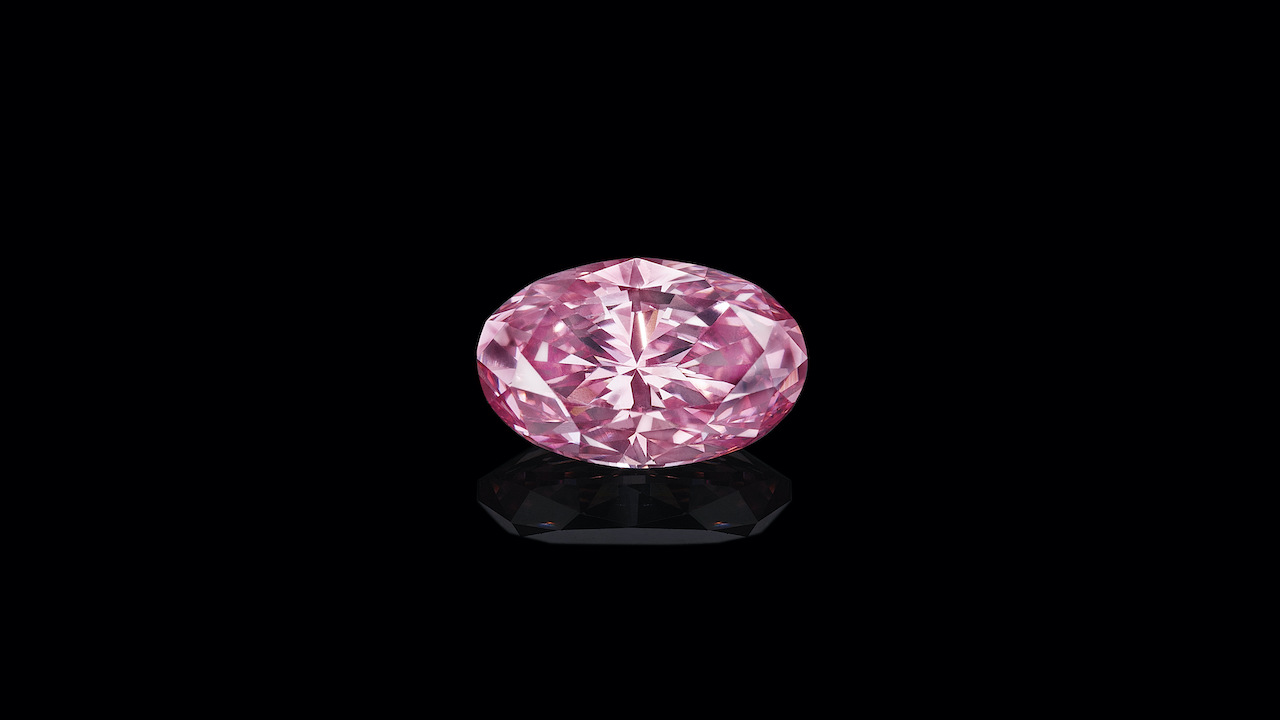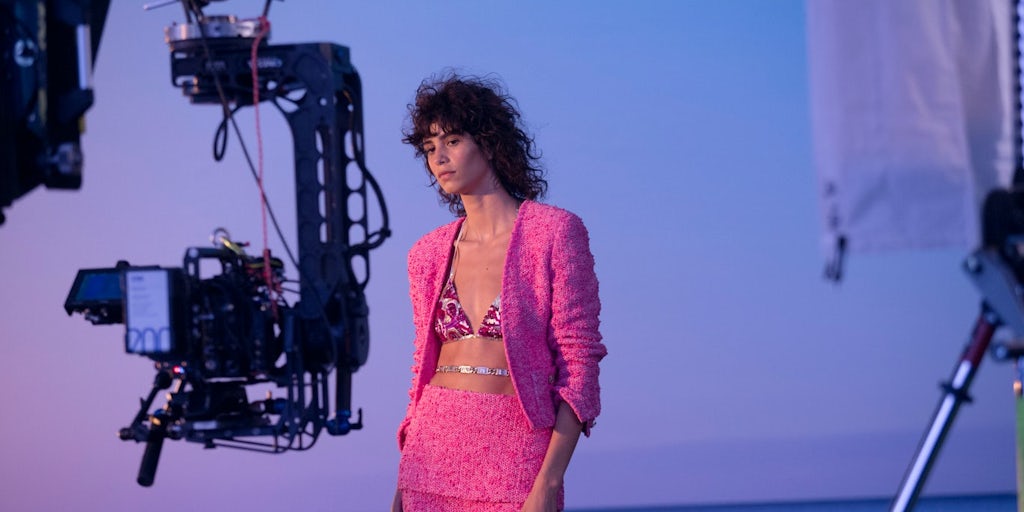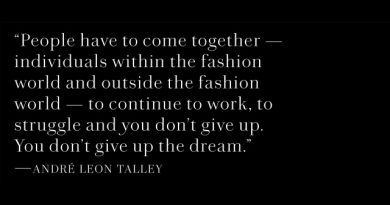Fashion Briefing: ‘Recession-proof’ luxury fashion is gaining traction as an investment opportunity
‘Recession-proof’ luxury fashion is gaining traction as an investment opportunity
The popularity of NFTs has opened the door to more opportunities for young consumers to invest in big-ticket fashion products.
Wednesday marked the official launch of Luxus, an investment marketplace centered on luxury consumer assets, starting with rare diamonds and ethically sourced precious gems. The company works with brands to provide fractional ownership to investors, thereby democratizing the luxury investment opportunity. Accredited and non-accredited investors who are at least 18-years-old and based in the U.S., to start, are eligible.
Luxus is the brainchild of Dana Auslander, former Blackstone executive and 23-year hedge fund veteran, and Gretchen Gunlocke Fenton, a former market editor at Vogue with experience at Chanel. They aim to use their connections and industry prowess to capitalize on the growing interest in luxury consumer goods investments, positioning the company at the intersection of luxury, commodities and collectibles. The luxury market rebounded in 2021 and is set to reach nearly $400 billion by 2025, with 6-8% sustained annual growth. That’s not to mention the new willingness by luxury consumers to invest online.
“Inflation is the highest it’s been in decades, but luxury had a banner year in 2021 and hard assets have never been more relevant,” said Auslander, calling them “recession-proof.”
That sentiment was echoed by Rachel Koffsky, Christie’s international senior specialist of handbags and accessories: “We set a world record price for a bag sold at auction right at the height of the recession in 2008.” On Wednesday, Christie’s sold nearly $70 million worth of jewels, led by two 200-carat diamonds including the largest white diamond ever sold at auction. Earlier in the week, Andy Warhol’s “Shot Sage Blue Marilyn” piece set the record price for a 20th Century work of art, also via Christie’s.
For diamonds, in particular, the war in Europe is a large contributor to demand, as one-third of the world’s diamonds are produced by Russian mining company Alrosa and are currently under U.S. sanctions.
Other than Luxus, there are plenty of “Reg A” platforms, providing an “IPO-light form of securitization” — think Nasdaq, but for assets under $75 million. Masterworks, specializing in fine art, is valued at over $1 billion. According to Auslander, Luxus’s differentiator is that it eliminates exclusivity; unlike with Masterworks, investors don’t need to be invited, and there’s no waitlist to invest. What’s more, she said, it fills the “glaring omission” of Reg As focused on gems and jewelry that she owed to the lack of women in the space. Most are centered on “man-made goods,” like real estate, whiskey and wine.
Auslander and Gretchen Gunlocke Fenton are counting on jewelry’s prominence in cultural events and entertainment to be a boon to the business. Auslander listed its role in everything from “Downton Abbey” to “Uncut Gems,” and called out its iconic red carpet moments, like Lady Gaga wearing the 128-carat Tiffany yellow diamond to the 2019 Oscars. Luxus has a direct tie, in that pieces worn by celebrities have increased value and are ripe for an investment opportunity, often saved in the archives or vaults of jewelry companies.
Luxus soft-launched in July after earning a pre-seed funding round of $2.5 million dollars. Investors include Veronica M. Beard, co-founder of fashion brand Veronica Beard, as well as current and former Blackstone executives.
Kwiat/Fred Leighton is the company’s launch partner, bringing an Argyle pink diamond to the masses via the platform. Shares will be $200, considering the high value of the diamond, at $400,000. The diamond was sourced from Australia’s Rio Tinto mine, which produced 95% of the world’s pink diamonds and closed in early 2020. According to Auslander, it was a “no-brainer” choice for the inaugural MVP, considering its analyzed increased annual value of 11.5% from 2005-2020. “We want people to make money,” she said.
Luxus plans to sell two more assets this year, before accelerating growth in 2023.
Along with Auslander and Gunlocke Fenton, Richard Jaycobs, former president of Cantor Fitzgerald’s CX Futures Market, has joined the company to manage its website, ensuring its ease of use for first-time investors. A corresponding app will launch in January. CX Futures Market offers trading in financial products related to categories including weather.
Luxus has also hired two executives from Christie’s, assisted by a wave of auction house workers currently making the jump to fintech, Auslander said. Among its advisory board are executives from Sotheby’s and Van Cleef & Arpels.
Luxus plans to add watches, other accessories and even automobiles to the platform in the future – but don’t expect to see a lot of soft luxury items, including handbags.
“There’s just not that much value in even the fanciest of Birkins,” Auslander said, though noted that future partnerships with Hermès and Chanel, exclusively among fashion houses, are being considered. “If it was a prototype created specifically for Jane Birkin, we’ll go there.”
Auslander said Luxus wants to exclusively trade in “museum-caliber” assets worth upward of $500,000. On that note, the founders are eying pieces currently housed in London’s Victoria and Albert Museum, among other museums. Using relevant museums to display Luxus assets is also a goal. Auslander mentioned that Boston’s Museum of Fine Art has a permanent exhibition dedicated to jewelry.
In the future, the company plans to launch a program making it desirable for sellers to bring rare heirlooms, for example, to the platform versus an auction house. It also has international ambitions, with its sights set on the Asian market.
For their part, brands benefit from the securitization of their most valuable products. Luxus files each asset with the SEC, plus it promotes the items and lists them on an Alternative Trading System (ATS).
“We’re totally regulated,” Auslander said. “This is not NFTs, it’s not crypto.”
Luxus investors can choose to sell their shares on the secondary trading market for a profit, starting in sync with Luxus’s app launch. In addition, the brand can opt to sell the asset into the private market for a price higher than the IPO. The brand is incentivized by a commission, and the proceeds are distributed to investors. Retailers are responsible for the insurance of the item and are charged with displaying it in a prominent area of their showroom.
As for marketing, Luxus is leveraging the names of its brand partners, a robust content calendar and “a lot” of its funding to introduce the company to both investors and consumers. For now, it’s relying on email campaigns and paid digital ads, with a heavy focus on Instagram. Next, it plans to invest in TikTok and Twitter, as well as launch a podcast.
This is not a timeshare program, in that investors never get to take a turn with the piece.
“Younger generations don’t care about actually owning, and that’s where they differ; Gen X and boomers want to see it, wear it and walk around with it,” Auslander said. “Younger people really care about what it’s going to do for their portfolios.”
Millennials and Gen Z are Luxus’s target audience, considering the demos’ interest in diversifying their investment portfolios, especially in culturally popular ways. That was proven by the NFT boom.
“The NFT and crypto movement is definitely in our favor,” said Auslander. “We thought NFTs would be a fad last year, and they’re clearly here to stay.”
Of course, the crypto-NFT space isn’t entirely stable. On Thursday morning, the value of dual cryptocurrencies Luna and Terra tanked, trading at $0.93 and $0.23, respectively. The latter is a “stablecoin,” meant to always trade at $1 per coin.
Still, Luxus plans to eventually join those playing in the NFT space, via OpenSea. The founders consider Luxus a forward step for conservative brands that are not yet ready to jump into the metaverse but want to get in front of young shoppers.
Big investments in tangible luxury fashion are also catching on within young demos. According to Koffsky, at a Christie’s handbag auction earlier this month, half of the new clients were millennials. The company advertises its auctions via WeChat, where 40% of users are ages 25-35, according to Statista.
In addition to bags, Christie’s is also seeing success in the wallet, scarf and charm categories. And in December, Christie’s sold its first NFT of a “Donda”-stamped bulletproof vest worn by Kanye West. It came with a West-signed physical version.
“Today fashion [shoppers] think very hard about where they’re going to put their money,” Koffsky said. “They want to buy things that are going to stand the test of time.”
In other news
Savage X Fenty is growing its physical retail footprint fast
The lingerie brand by Rihanna opened its first store, in Las Vegas, in January, followed by stores in Culver City, Houston, Philadelphia and Washington, D.C. On May 4, it announced that it’s opening locations in six new markets: Chicago, Long Island, Atlanta, Detroit, St. Louis and Newark, DE, bringing its store count to 11. All are set to be open by the end of the year, “pending any material delays, given ongoing shipping challenge,” Savage X Fenty co-president and CMO Natalie Guzman and co-president and chief merchant Christiane Pendarvis told Glossy.
The store locations were based on cities with the highest densities of Savage X Fenty VIPs, and all are in mainstream malls, “which are in close proximity to where they shop,” the executives said. And each in-store experience is designed to make customers feel “confident and represented.” The Las Vegas store features body-scanning fit technology to eliminate the guesswork of finding the right size. The 4-year-old company, now worth $200 million, offers bras in cup sizes A-H.
DTC brand marketing agency Belardi Wong is predicting that 2022 will be a record year for store openings. In an April survey of its clients, which include Frances Valentine, Outerknown and ClareV, among others, 18% said they plan to open stores for the first time, 18% said they’ll test stores with pop-ups, and 37% said they have stores and plan to open more.
Saks is catering to shoppers’ wanderlust
In the company’s Saks Luxury Pulse online survey of 2,300 U.S.-based luxury shoppers, conducted in late February, 68% were planning a trip and 38% had already booked one, according to data released on Thursday. Meanwhile, 56% said they planned to shop for new vacation wear between March-May. Specifically, Saks customers are interested in trends including cutouts, shorts suits and statement pops of color.
Saks chief merchandising officer Tracy Margolies told Glossy that, despite inventory issues across the industry, the retailer was at the ready. “We anticipated the built-up demand for our customers to shop for [vacations], so we planned accordingly in our assortment in order to meet their fashion needs.”
At Mr Porter, mental health awareness meets hype
On Friday, timed with Mental Health Awareness Month, Yoox Net-a-Porter menswear e-tailer Mr Porter launched Tee Store x Mr Porter Health in Mind, an exclusive capsule collection meant to drive awareness for men’s mental health and wellbeing. The Tee Store, first introduced in late 2019 is the company’s exclusive collection of various takes on the wardrobe staple.
The Tee Store x Mr Porter Health in Mind collection is composed of 104 pieces – including T-shirts, hoodies and hats, priced $15-$1,115 – by 18 contemporary designer brands, like Acne Studios, Gallery Dept. and Carhartt WIP. Many of the styles feature bright colors and center on common themes like happiness and friendship. One-hundred percent of the profits of each piece sold for the first two weeks will go to the MrPorter Health in Mind fund powered by Movember, supporting men’s mental and physical health initiatives.
“We felt these brands would add an original perspective to the topic, while also producing a phenomenal product,” Daniel Todd, senior buyer at Mr Porter, told Glossy. He added that the focus of the initiative was based on “the success of past Tee Store launches.”
“One of our biggest goals with the initiative is to normalize conversations on mental health — or, to put it simply, to talk to each other about how we’re feeling,” said Todd, of Mr. Porter Health in Mind, launched three years ago. So far, the company has aimed to do so through dedicated stories in its The Journal online magazine, as well as social content and campaigns.
Klarna launches an app for retailers
On Thursday, payments provider Klarna, announced it’s now offering virtual shopping services via in-store associates to its 400,000 global retail partners. The move follows the company’s 2021 acquisition of Hero, which specializes in the technology. According to Klarna, the launch is a step toward its goal of establishing itself as “a marketing growth partner for retailers and all-in-one shopping service for consumers.”
The service is offered through a new merchant-facing Klarna Store App, which will evolve with new features and functionality, Adam Levene, head of social shopping at Klarna, told Glossy.
To date, Klarna has focused on growing its consumer-facing Klarna Shopping App, which had 4 million monthly active U.S. users, as of August. According to Levene, that, too, will get the virtual treatment.
“Virtual shopping is the first of a suite of new social shopping services Klarna will roll out, designed to make online shopping more interactive, personal and ultimately more human,” he said. “And we do have plans to bring the feature into new platforms, including the Klarna Shopping App, in the future.”
Inside our coverage
Inside Frame’s growth strategies (and SoHo store)
The recording from the Glossy+ member-exclusive live podcast event at Frame SoHo late last month is now live. Have a listen to hear how the brand has evolved in its 10 years in business and where it’s focusing its efforts now, according to co-founder and chief creative officer Erik Torstensson.
Princess Diana is still a style icon
Forty years after Princess Diana put Warm & Wonderful on the map by wearing one of its intarsia sweaters featuring sheep, Rowing Blazers founder Jack Carlson is reviving the brand. Eighteen months in, it’s done $5 million in sales to 20,000 customers.
More of what happened this week
Among the three stories discussed on this week’s Week in Review Podcast is Salvatore Ferragamo’s big growth goals: CEO Marco Gobbetti said on the company’s earnings call on Tuesday that it plans to double its sales in 4-5 years. For its new creative director, Maximilian Davis, who joined the company in March, the pressure is on. “He has the remarkable capacity to define a very specific style and visual identity in a very short time,” Gobbetti said.





